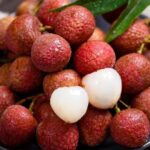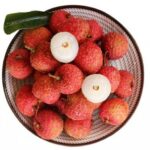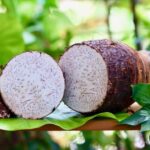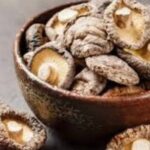Litchi, or lychee, is a delightful summer fruit with a unique taste and a range of nutritional benefits. To select the best lychees, it’s important to know what to look for.
The peak season for lychees is from May to July, when you can find the sweetest and most delicious fruit. Lychees are versatile and can be enjoyed fresh, or used in a variety of dishes and drinks. They make excellent juice, smoothies, or fruit salads, and can also be turned into desserts such as jelly or ice cream, adding a summery twist to your menu. Additionally, lychees can be dried to prolong their shelf life, preserving their distinctive flavor for enjoyment throughout the year.
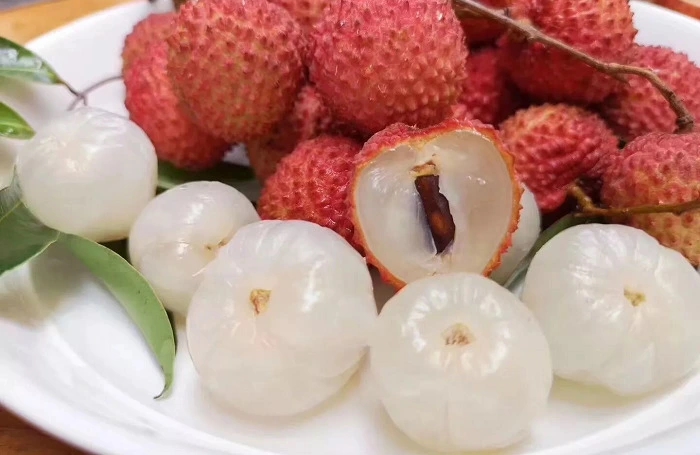
When choosing lychees, avoid the common mistake of solely relying on their external appearance or size. Larger, bright red lychees aren’t always the best. Pay attention to the stem, and don’t forget to check the fruit’s bounce and aroma to avoid overripe or damaged ones.
4 Criteria for Selecting the Best Lychees, Ensuring Thick Flesh and No Worm-eaten Stems
1. Size and Shape
When it comes to lychees, size and shape matter. Smaller, evenly-sized lychees tend to be sweeter, with thicker flesh and smaller seeds, ensuring a more satisfying eating experience. Larger lychees may have bigger seeds and thinner flesh, detracting from the overall enjoyment.
2. Stem and Skin Condition
The stem and skin of a lychee can reveal a lot about its quality. Look for lychees with small, dry stems, and vibrant, reddish-pink skin free from dark spots or bruises. The skin should feel firm yet slightly yielding, and it should be easy to peel, indicating a well-ripened fruit.
A lychee free of worm damage will have a small, dry, and firm stem, indicating that it was recently picked and is fresh. The lychee’s “eye” (the stem’s base) should be white and clean, with no small holes or black residue, which could indicate worm activity.
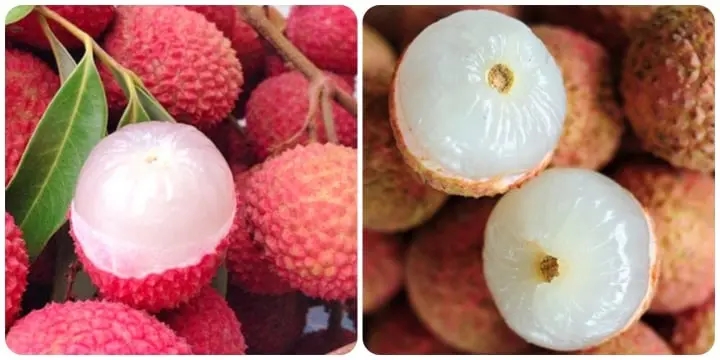
3. Aroma
Don’t underestimate the power of smell! A delicious lychee will have a strong, distinctive fragrance that tantalizes your taste buds. If the aroma falls short, or leans towards sour or bland, the fruit may not be at its freshest or may have been stored too long.
4. Bounce
The perfect lychee will have a slight give when pressed, indicating ripeness, while still retaining a firm texture. A very firm lychee may need more time to ripen, while an overly soft one could be overripe or past its prime.
Tip for Enjoying Lychees Without the Heat
Lychees are a delicious treat, but it’s important not to overindulge. Eating too many at once can lead to internal heat. Limit your intake to a comfortable amount, such as 5-10 lychees, depending on your body’s tolerance.
Pair lychees with cooling foods: Enjoy lychees with cooling fruits like watermelon or cucumber, or drink a glass of jujube juice to balance the heat and prevent internal discomfort.
Stay hydrated: Drinking plenty of water is crucial when eating lychees to avoid heat-related issues. Water helps regulate body temperature and flushes out toxins through the excretory system.
These tips are especially useful for those with a heat-prone constitution, digestive issues, or a tendency to feel overheated. Listen to your body and adjust your lychee intake accordingly for the best experience.
Source: Nguoiduatin
The Foraged Delicacy: A Seasonal Treat with a Healthy Twist.
According to Doctor Huynh Tan Vu, taro is a rich source of potassium, fiber, and vitamins. Regular consumption may help prevent hypertension and reduce the risk of certain cancers and cardiovascular diseases. In folk belief, consuming taro soup during the Mid-Autumn Festival is considered auspicious and believed to bring good luck.

























